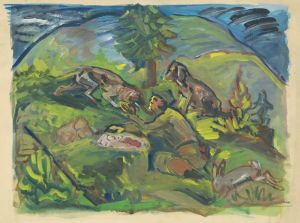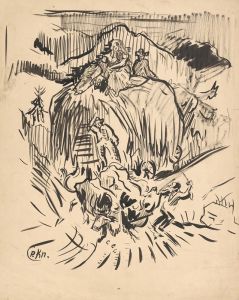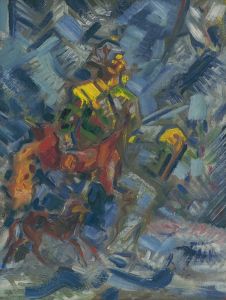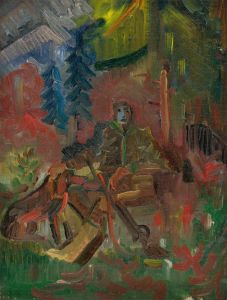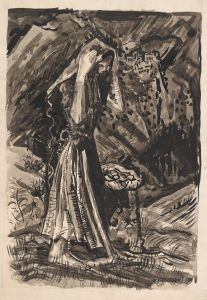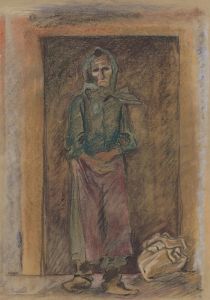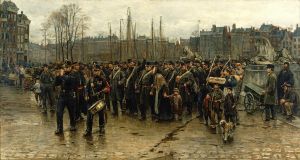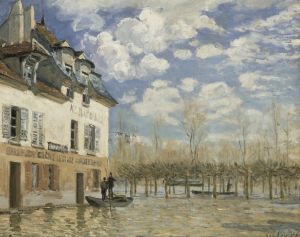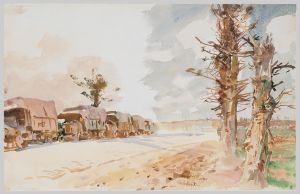
Timber transport
A hand-painted replica of Arnold Peter Weisz-Kubínčan’s masterpiece Timber transport, meticulously crafted by professional artists to capture the true essence of the original. Each piece is created with museum-quality canvas and rare mineral pigments, carefully painted by experienced artists with delicate brushstrokes and rich, layered colors to perfectly recreate the texture of the original artwork. Unlike machine-printed reproductions, this hand-painted version brings the painting to life, infused with the artist’s emotions and skill in every stroke. Whether for personal collection or home decoration, it instantly elevates the artistic atmosphere of any space.
Arnold Peter Weisz-Kubínčan was a Slovak artist known for his contributions to modern art in the early 20th century. His work often reflected the socio-political changes and cultural dynamics of his time. One of his notable paintings is "Timber Transport," which exemplifies his unique style and thematic focus.
"Timber Transport" captures a scene that was common in the rural and industrial landscapes of Slovakia and other parts of Central Europe during the early 20th century. The painting depicts the movement of timber, an essential industry in the region, which played a significant role in the economic development of Slovakia. Timber transport was a crucial part of the supply chain, involving the movement of logs from forests to mills and markets, often using rivers, horse-drawn carts, or early mechanized vehicles.
Weisz-Kubínčan's painting is characterized by its dynamic composition and attention to detail, reflecting both the physical labor involved in timber transport and the natural environment in which it took place. The artist's use of color and form conveys the energy and rhythm of the workers and their interaction with the landscape. The painting likely employs a modernist approach, with influences from Cubism or Expressionism, which were prevalent in European art during this period.
The socio-economic context of "Timber Transport" is significant. During the early 20th century, Slovakia was part of the Austro-Hungarian Empire until the end of World War I, after which it became part of Czechoslovakia. This period was marked by industrialization and modernization, which brought about changes in traditional industries such as timber. The painting may reflect these transitions, capturing a moment in time when traditional methods were gradually giving way to more modern techniques.
Arnold Peter Weisz-Kubínčan's work, including "Timber Transport," is an important part of Slovak cultural heritage. His paintings offer insights into the historical and cultural context of the region, as well as the broader trends in European art. Weisz-Kubínčan's ability to blend local themes with modernist techniques makes his work distinctive and valuable for understanding the artistic and historical landscape of early 20th-century Slovakia.
While specific details about the creation date or the current location of "Timber Transport" may not be widely documented, the painting remains an example of Weisz-Kubínčan's artistic legacy. His work continues to be studied and appreciated for its contribution to Slovak art and its reflection of the cultural and economic narratives of his time.
In summary, "Timber Transport" by Arnold Peter Weisz-Kubínčan is a significant work that captures the essence of a vital industry in early 20th-century Slovakia. Through his modernist style, Weisz-Kubínčan provides a window into the historical and cultural shifts of his era, making his work an enduring part of the Slovak artistic canon.






